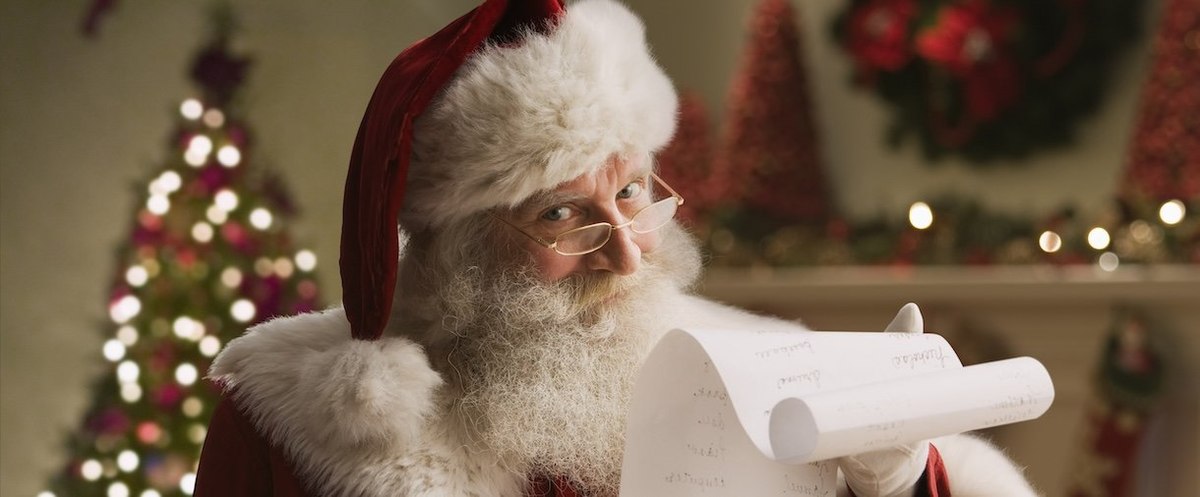A new YouGov survey finds that 86% of Americans plan to celebrate Christmas or another winter holiday. Many will be traveling, taking children to see Santa, listening to holiday music, and finding other ways to enjoy the season. The poll also explored whether Americans think there is a war on Christmas and which political party they think Santa Claus would be more likely to support.
The share of Americans who agree there is a war on Christmas in the United States has fallen since December 2022, to 23% from 39%. Among Republicans, 36% believe there is a war on Christmas, down from 59% in 2022.
Today, while 46% of Americans disagree that there is a war on Christmas, while 23% disagree. 33% of Republicans, 47% of Independents, and 61% of Democrats disagree.
If Santa Claus were a registered voter, would he support the Democratic Party or the Republican Party, or be an Independent? 30% of Americans — the largest share — think Santa would be aligned with Independents. 21% think he would support the Republican Party and the same share think he would support the Democratic Party.
Democrats, Independents, and Republicans all are likeliest to say Santa would share their political affiliation. Among Democrats, 62% think he would support the Democratic Party. Among Independents, 50% think he would support Independents. Among Republicans, 55% think Santa would back the Republican Party.
Wherever he lands on the political spectrum, Santa will be an important part of this Christmas for many households, particularly those with children. Among parents who have children under 18, 61% say Santa Claus plays a very or somewhat important role in their holiday celebration. 58% of parents with children under 18 say they have at least one child who currently believes in Santa and 52% say they plan to pretend Santa visited their home on Christmas Eve or Christmas Day this year.
Other Santa elements will play a big role in celebrations this year. 65% of parents with children under 18 say their children will be hanging up a stocking for Santa to fill this year. 48% say their children will visit Santa in-person at a mall or holiday event, 45% say their children will be leaving out cookies and milk for Santa, and 43% say their children will be writing a letter to Santa asking for gifts. 41% of parents say their children will be tracking Santa’s progress on Christmas Eve.
How long should children believe in Santa Claus? 13% say 10 years old is too old for a child to believe in Santa; 23% think the maximum acceptable age for a child to believe in Santa is 9 or younger. 24% think children are never too old to believe in Santa, and 6% say children should never believe in Santa in the first place.
While opinions differ on Santa's role in the lives of children who believe in him, Santa sentiment generally is more positive than negative. 81% agree that teaching children to believe in Santa creates an opportunity for family bonding and shared memories, and 80% say doing so creates a fun and magical holiday experience. 74% say teaching children to believe in Santa teaches the values of giving and generosity; slightly fewer say it teaches the importance of being good and following the rules (69%) and teaches the importance of patience and delayed gratification (63%).
Less than half of Americans agree that teaching children to believe in Santa teaches a narrow and simplistic view of good and bad behavior (43%) and the same share agree that it promotes materialism and a focus on receiving presents (43%). 34% say it detracts from the true religious meaning of Christmas, 29% say it reinforces stereotypes by portraying Santa as a white man, and 24% say it leads to feelings of mistrust and disappointment upon realizing Santa isn’t real.
For many families, Santa is a tradition passed down through generations. 81% of Americans say they believed in Santa as a child and 76% say their own parents or guardians pretended that Santa visited their home.
74% of Americans say as children, they visited Santa in-person. 69% hung up stockings for him to fill, 63% left out cookies and milk, and 60% wrote letters asking him for gifts. Fewer (39%) tracked his progress on Christmas Eve.
But belief in Santa eventually comes to an end for most children. 13% of Americans stopped believing in Santa when they were 6 or younger. 24% stopped believing in him sometime between the ages of 6 and 9, and 13% stopped believing when they were 10 years old. 11% stopped believing in Santa when they were between 11 and 13 years old and 4% stopped believing in him when they were 14 or older. 11% say they never believed in Santa, and 25% are unsure when they stopped believing.
Among people who ever believed in Santa, 34% say they were disappointed when they found out he wasn’t real. 26% say they were sad, 20% say they were indifferent, and 19% say they were surprised, when choosing among 11 adjectives to describe how they felt.
Much like Santa traverses the world in his sleigh, 19% of Americans who celebrate Christmas or another winter holiday will be traveling for the holidays. Of those who will be traveling, 72% will travel by car, 32% will travel by plane, and 8% will travel by train.
Among people who plan to celebrate the holidays, most will do so in gatherings of 10 people or fewer. 39% say they’ll be celebrating with between one and five people, including themselves. 29% will be celebrating with six to 10 people, 12% will be celebrating with between 11 and 15 people, 6% will be celebrating with between 16 and 20 people, and 5% will be celebrating with more than 20 people.
Among the most popular holiday activities are listening to holiday music (75% say they will do this during the holiday season), watching a holiday movie (75%), and exchanging holiday presents (75%). 70% will be looking at holiday lights, 67% will be decorating a Christmas tree, 60% will be drinking hot cocoa, and 60% will put up holiday lights.
See the results for this YouGov survey
— Carl Bialik and Taylor Orth contributed to this article
Methodology: This article includes results from an online survey conducted December 3 - 5, 2024 among 1,107 U.S. adult citizens. Respondents were selected from YouGov’s opt-in panel to be representative of adult U.S. citizens. The sample was weighted according to gender, age, race, education, 2024 presidential vote, 2020 election turnout and presidential vote, baseline party identification, and current voter registration status. 2024 presidential vote, at time of weighting, was estimated to be 48% Harris and 50% Trump. Demographic weighting targets come from the 2019 American Community Survey. Baseline party identification is the respondent’s most recent answer given around November 8, 2024, and is weighted to the estimated distribution at that time (31% Democratic, 32% Republican). The margin of error for the overall sample is approximately 4%.
Image: Getty











